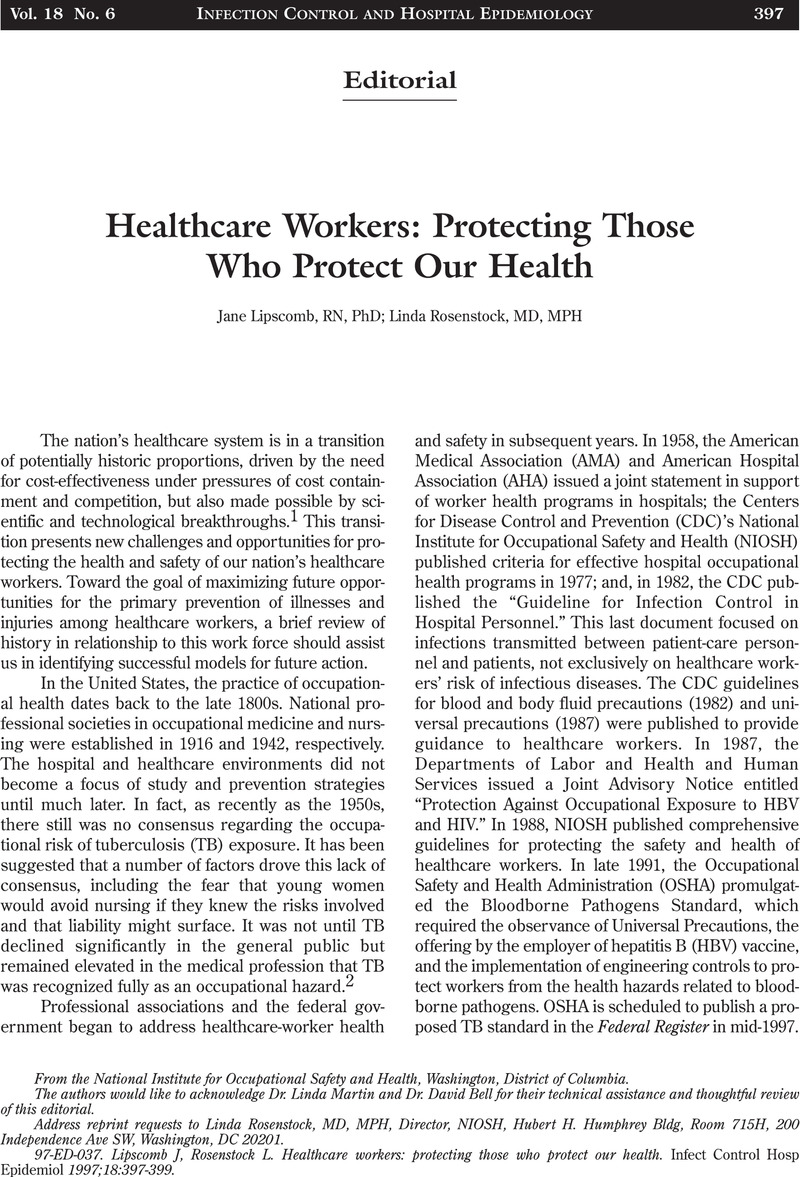Crossref Citations
This article has been cited by the following publications. This list is generated based on data provided by Crossref.
Stone, Dawn Salpaka
2000.
Health Surveillance for Health Care Workers.
AAOHN Journal,
Vol. 48,
Issue. 2,
p.
73.
Wilburn, Susan Q.
and
Eijkemans, Gerry
2004.
Preventing Needlestick Injuries among Healthcare Workers: A WHO-ICN Collaboration.
International Journal of Occupational and Environmental Health,
Vol. 10,
Issue. 4,
p.
451.
Ndejjo, Rawlance
Musinguzi, Geofrey
Yu, Xiaozhong
Buregyeya, Esther
Musoke, David
Wang, Jia-Sheng
Halage, Abdullah Ali
Whalen, Christopher
Bazeyo, William
Williams, Phillip
and
Ssempebwa, John
2015.
Occupational Health Hazards among Healthcare Workers in Kampala, Uganda.
Journal of Environmental and Public Health,
Vol. 2015,
Issue. ,
p.
1.
McPhaul, Kathleen M.
and
Pompeii, Lisa A.
2020.
Progress on Occupational Health Research and Practice Among Health Care Workers.
Workplace Health & Safety,
Vol. 68,
Issue. 7,
p.
308.
Prajwal, MS
Kundury, KanakavalliK
and
Sujay, MJ
2020.
Assessing the awareness on occupational safety and health hazards among nursing staff of a teaching hospital.
Journal of Family Medicine and Primary Care,
Vol. 9,
Issue. 12,
p.
5961.
AlDhaen, Esra
2022.
Awareness of occupational health hazards and occupational stress among dental care professionals: Evidence from the GCC region.
Frontiers in Public Health,
Vol. 10,
Issue. ,





